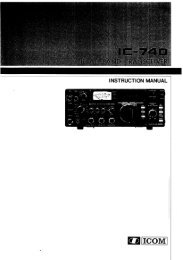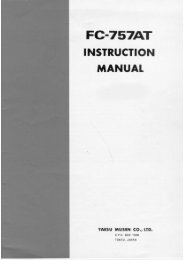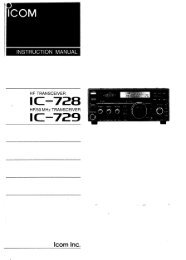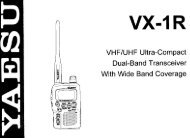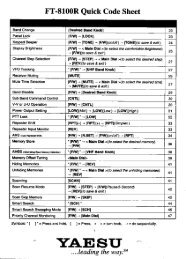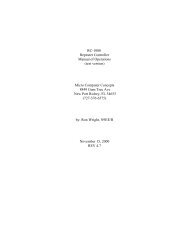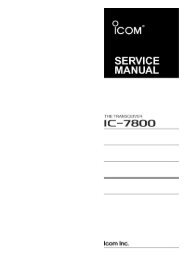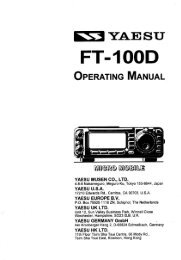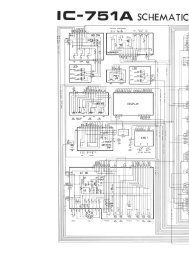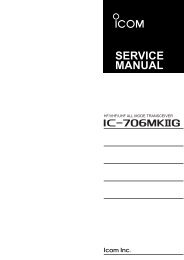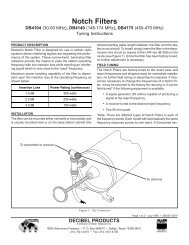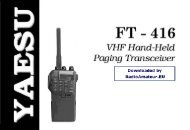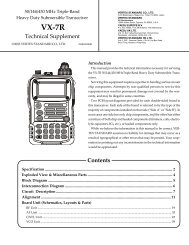Lightning Protection for Ham Radio Stations
Lightning Protection for Ham Radio Stations
Lightning Protection for Ham Radio Stations
You also want an ePaper? Increase the reach of your titles
YUMPU automatically turns print PDFs into web optimized ePapers that Google loves.
<strong>Ham</strong> <strong>Radio</strong> Station <strong>Protection</strong>Document ID: PEN1016Page 11 3 of 11Since copper strap has lower inductance than wire, it is recommended <strong>for</strong> the radial run. The strap’s extrasurface area reduces the inductance and the sharp edges allow <strong>for</strong> a high E field concentration <strong>for</strong>cing morecharge into the soil. Short multi-point (like barbed wire) type grounding systems have been tried and have notbeen as effective as the sharp edge of copper strap <strong>for</strong> ground rod interconnecting material or <strong>for</strong> radial runswithout rods. Copper strap radials have been proven successful on bare mountain top solar powered siteswhere ground rods could not be used. The strap edges helped disperse the strike’s deposited charge to thetower by arcing onto the mountain surface, saving the solar powered radio equipment at the site.Adding ground doping material to your radial trenches and rods can be helpful. Stay away from gels and otherchemicals that can shorten conductor life. All add-on conductive earthing materials do little except make yourcopper conductors larger (more conductive surface area). This gives some percentage of improvement butit still must interconnect to conductive soil where it has both salts and moisture. If the soil is dry around theearthing material, the connection to earth will be poor, regardless of the advertised claims. If the area is notlarge enough, the earth connection will suffer. By increasing the area of your ground system with the additionof more radials, the same improvements can be obtained <strong>for</strong> less money.LongevityAfter doing all this work, Mother Nature still has a way of making anything we do temporary. Once a groundsystem is in the ground it will start to age. Copper and other metals are attacked by acids, while aluminum isattacked by bases. Other chemicals may be present in the soil causing decreased effectiveness of thegrounding materials. This is why maintenance testing is important. While some ground systems last 30 years,others don’t even last two years! There are two ways of finding out if your ground system is in need of work.One is after a lightning strike and is too late! The other is to measure the system. An old timer once told methat he tested a ground by disconnecting it from everything and connecting it to power “hot” through a 30 ampfuse. If the ground was good, the fuse would blow. This is not the way to test a ground and it could change thesoil conductivity by attempting such a test. The proper way is to use an earth resistance meter providing a fallof potential type test. Be careful when connecting a ground system to your electrical utility ground rod.Depending on ground conductivity, harmonic and other currents, there could be current flow causing a sparkwhen connected.Last Reviewed: 1/9/03



